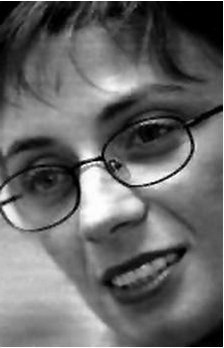
Tatjana Milošević Mijanović (b.1970) completed her undergraduate and postgraduate studies of composition at the Faculty of Music in Belgrade with Zoran Erić, who also supervised her doctoral artistic project, which she presented in 2013 – a two-act chamber opera titled Ko je ubio princezu Mond? (Who Killed Princess Mond?). Today Tatjana is a full professor at the same department. She also teaches composition at the Academy of Art (Akademija umjetnosti) in Banja Luka. She was a visiting professor at the Old Dominion University in Norfolk, Virginia (USA). She participated as a lecturer and member of the jury in the young composers’ course at the 15th Young Composers Meeting in Apeldoorn (Netherlands).
Works by Tatjana Milošević Mijanović have been performed at a number of major festivals and concerts of contemporary music in the majority of European countries, in the United States, South Korea, as well as Serbia and the region (BEMUS, NIMUS, International Review of Composers, Music Biennial Zagreb…). She has collaborated with numerous Serbian and foreign performers and ensembles: the RTS Symphony Orchestra, Belgrade Philharmonic Orchestra, St. George Strings, Construction Site ensemble, Trio Pokret, Trio Singidunum, Academic choir Collegium musicum, Belgrade Baroque ensemble, Het Trio and De Ereprijs (the Netherlands), Creo (USA)…
Supported by UNESCO, she took part in Waterproof, a project that also saw the performance and publication of her electronic piece titled Tribute for Fort Hosnwijk in 2001. Tatjana Milošević Mijanović has won a number of Serbian and international awards for music composition.
About the piece
Intermissions for symphony orchestra presents an experimental exploration of perception of continuity (“order”) and discontinuity (“disorder”) of the music flow. The piece is characterised by the prepared and sudden halts which create an impression in abstracto of continuity or discontinuity.
Intermissions is based on two contrasting music contents: an “abstract” one which keeps returing to the initialis, reminiscent of a spiral in presenting ever more complex transformations of the music material, and a “realistic” one, which is characterised by regular metric-formal units and exact repetitions. Similarly to my earlier works, here I explore the compatibility of extremely contrasting thematic contents.


